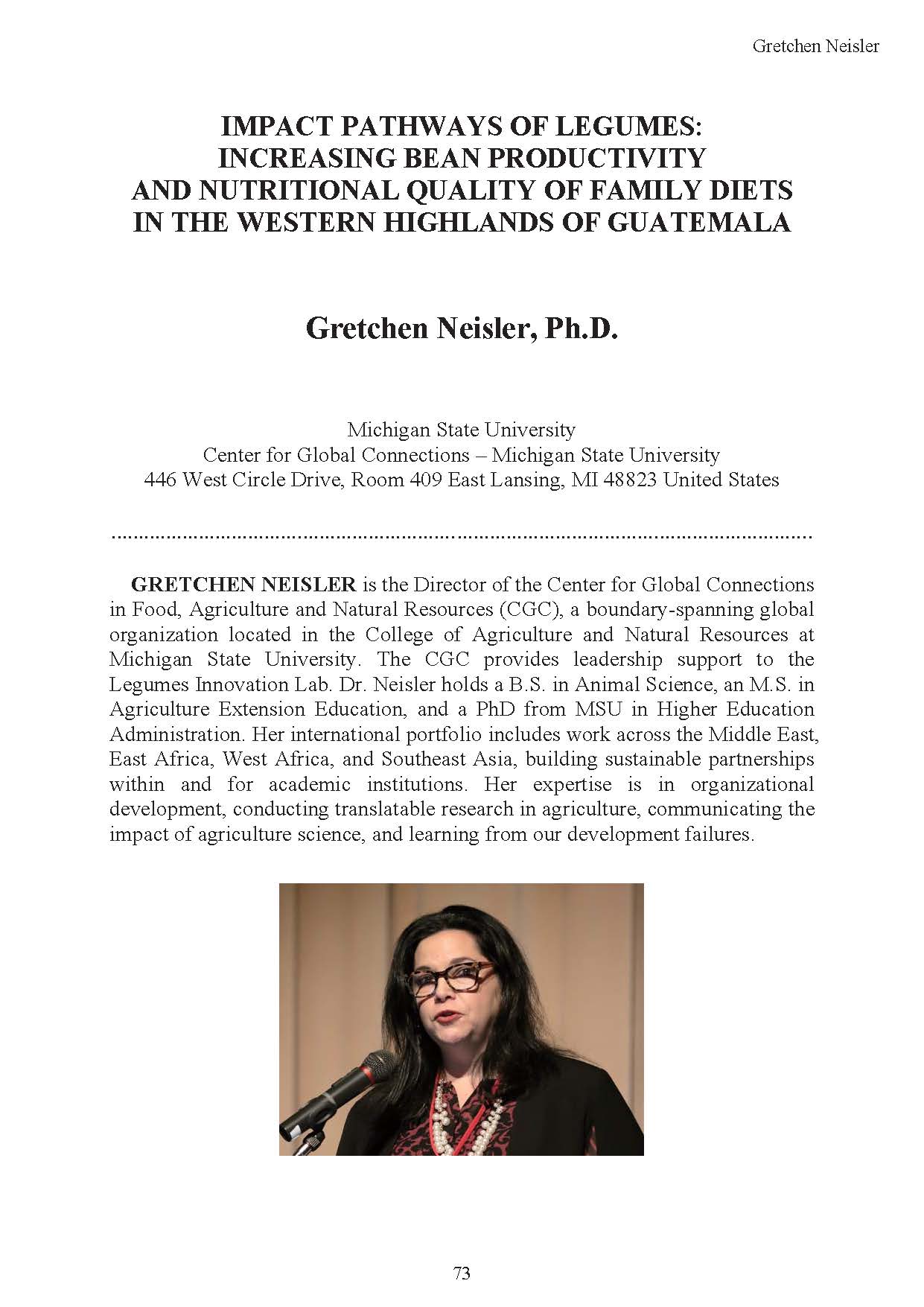Impact pathways of legumes: Increasing bean productivity and nutritional quality of family diets in the Western Highlands of Guatemala

Despite the fact that the three sisters of agriculture (maize, beans, and squash) were domesticated in the Americas and provide a wholesome diet when augmented weekly with animal foods, and despite efforts to increase agricultural production, the indigenous Mayan population of the western highlands of Guatemala remains one of the most undernourished in the world (UNICEF 2013). Government and donor-led efforts have been reporting on the consequences of malnutrition in the Guatemalan population, particularly children of Mayan families located in municipalities with the highest stunting rates. Locally and internationally, this situation has been portrayed as a national shame since many consider that the country is rich enough to have prevented this situation (The Economist, 2009). Government-funded hunger and malnutrition relief projects are working in a state of emergency to improve the situation in priority municipalities. Másfrijol is part of the Legume Innovation Lab's unique approaches focused on improving the nutrition of the entire family by promoting a greater consumption of beans.
The Feed the Future Innovation Lab for Collaborative Research on Grain Legumes, branded as the "Legume Innovation Lab (LIL), began in 1980 as the Bean/Cowpea Collaborative Research Support Program (CRSP) (1980-2007). The program supports ten multi-disciplinary collaborative research and institutional capacity strengthening subcontracted projects working in 13 Feed the Future countries in Africa and Central America and the Caribbean involving scientists at 10 US universities, 3 USDA/ARS research centers, and 23 developing country national agriculture research systems and universities. Much of the LIL research portfolio is geared toward producing new technologies, mainly new grain legume varieties. Six of the ten projects are focused on advancing legume productivity; five of these are focused on plant breeding and genetic improvements, while research of the sixth (SO1.B1) focuses on integrated pest management technologies and overcoming other production constraints.
Másfrijol is a new approach within the LIL that situates nutrition education as a major component. The program provides intensive measures to promote dry bean consumption through consumer (particularly women's) training and education. The training is intended to move under-five children's diets from mainly maize consumption toward more diversity and foods with higher nutrient density such as beans. The output from Másfrijol is educated consumers that have a solid platform in which they can make household decisions for the family. The outcome of this approach is comprehensive and sustainable change in production and dietary decisions among a population of people that has otherwise been ignored.
Global development project impact pathways are complex. As a result of this complexity, the pathway from research outputs to impacts must consider several conditions, most of which are beyond the scope of a pure research project. The Másfrijol project made a conscious decision to institutionalize impact assessment focused on improving project outcomes and by connecting with local stakeholders in every aspect of the programming. This approach integrated a culture of impact assessment and generated an awareness among stakeholders about the obstacles that they were facing and ways in which they could overcome them to obtain sustainable change. The project team and its stakeholders were able to visualize how the research fits into development change and to understand constraints to realization of the change needed as indicated by the research.
| Creator | Gretchen Neisler |
|---|---|
| Subject |
Guatemala impact assessment stakeholders Másfrijol |
| Publisher | Japan International Research Center for Agricultural Sciences |
| Available Online | |
| Issue | 2016 |
| spage | 73 |
| epage | 80 |
